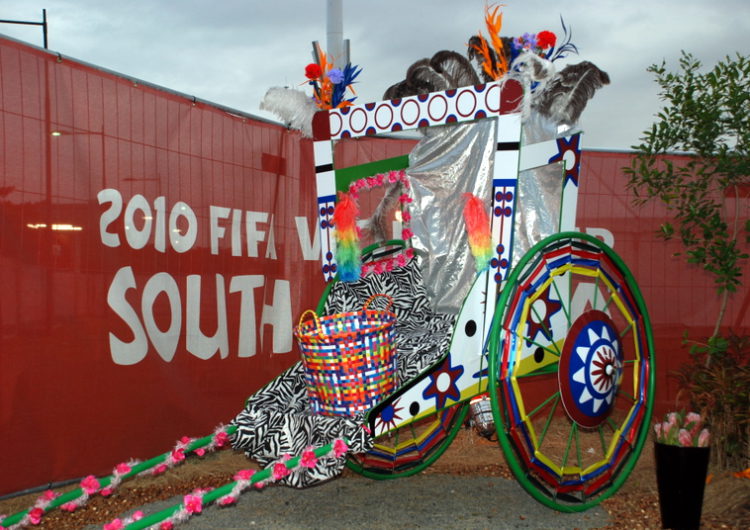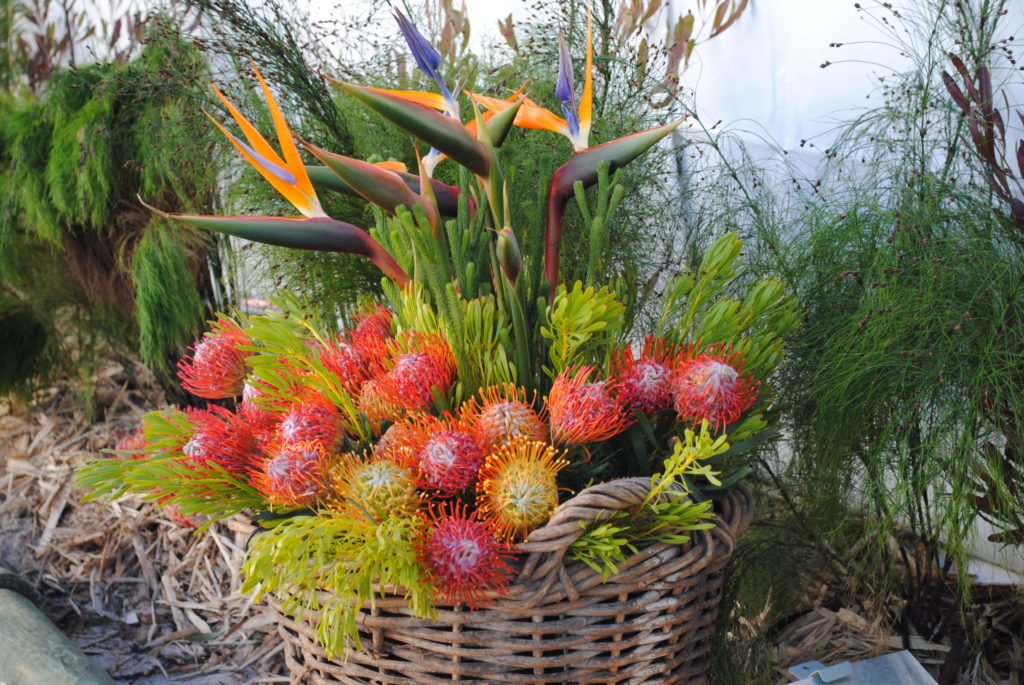- Multi-Disciplinary Greens Services Company
- B-BBEE Level 1
FIFA World Cup South Africa 2010
The FIFA World Cup South Africa 2010 was not just about football and tourists. It also happened to be the biggest event in the history of Southern Africa’s cut flower industry.
Over a four week period (June 11 to July 11), the cut flower industry provided 96 tonnes of primarily indigenous flowers to teams of florists in 10 stadia around the country – each of whom had their own specially designed indigenous décor theme.
The local demand for proteas, strelitzias and fynbos was so great locally, that exports of indigenous flora to Europe and America dried up completely. “Nothing was shipped to Europe between Mother’s Day (May 9) until the end of July”, says cut flower wholesaler, Rene Schoenmaker.
Over a four week period (June 11 to July 11), the cut flower industry provided 96 tonnes of primarily indigenous flowers to teams of florists in 10 stadia around the country – each of whom had their own specially designed indigenous décor theme.
The local demand for proteas, strelitzias and fynbos was so great locally, that exports of indigenous flora to Europe and America dried up completely. “Nothing was shipped to Europe between Mother’s Day (May 9) until the end of July”, says cut flower wholesaler, Rene Schoenmaker.

At each of the 64 matches, floral teams were commissioned to decorate 1 010 commercial suites, 22 000sqm of stadium lounges and restaurants, 32 500sqm of external restaurant structures, 17 entrances and nearly 12 000sqm of VIP areas for the local organising committee and their guests as well as club & private units for 14 FIFA Affiliates.
At the larger stadiums, florists moved up and down five storeys of hospitality lounges. By the end of the event, they had used 2770 large containers, 4000 glass vases and 6500 pots of various sizes. An extraordinary 50 000 blocks of green Oasis bricks and 500m3 of polystyrene filler were used in arrangements together with 2500 plastic buckets and 250 secateurs.
At the larger stadiums, florists moved up and down five storeys of hospitality lounges. By the end of the event, they had used 2770 large containers, 4000 glass vases and 6500 pots of various sizes. An extraordinary 50 000 blocks of green Oasis bricks and 500m3 of polystyrene filler were used in arrangements together with 2500 plastic buckets and 250 secateurs.

Indigenous flowers
How many cut flowers were used in hospitality suites at the World Cup? Over the 30 day event, 345 000 bunches of flowers and fynbos had be used. This included 258 000 proteas, 38 000 bunches of fynbos, 9 000 arums, 20 000 strelitzias and 9 000 roses.
Most of the strelitzias came from the Mbombela (Nelspruit area) where growers had been preparing hectares of crane flowers (Strelitzia regina) for the event.
How many cut flowers were used in hospitality suites at the World Cup? Over the 30 day event, 345 000 bunches of flowers and fynbos had be used. This included 258 000 proteas, 38 000 bunches of fynbos, 9 000 arums, 20 000 strelitzias and 9 000 roses.
Most of the strelitzias came from the Mbombela (Nelspruit area) where growers had been preparing hectares of crane flowers (Strelitzia regina) for the event.
The floral team
At the peak of the contract, 200 florists & specialist workers working at the ten stadia and by the end of the contract, the team had clocked up a cumulative 70 000 man hours of work.
At the peak of the contract, 200 florists & specialist workers working at the ten stadia and by the end of the contract, the team had clocked up a cumulative 70 000 man hours of work.
